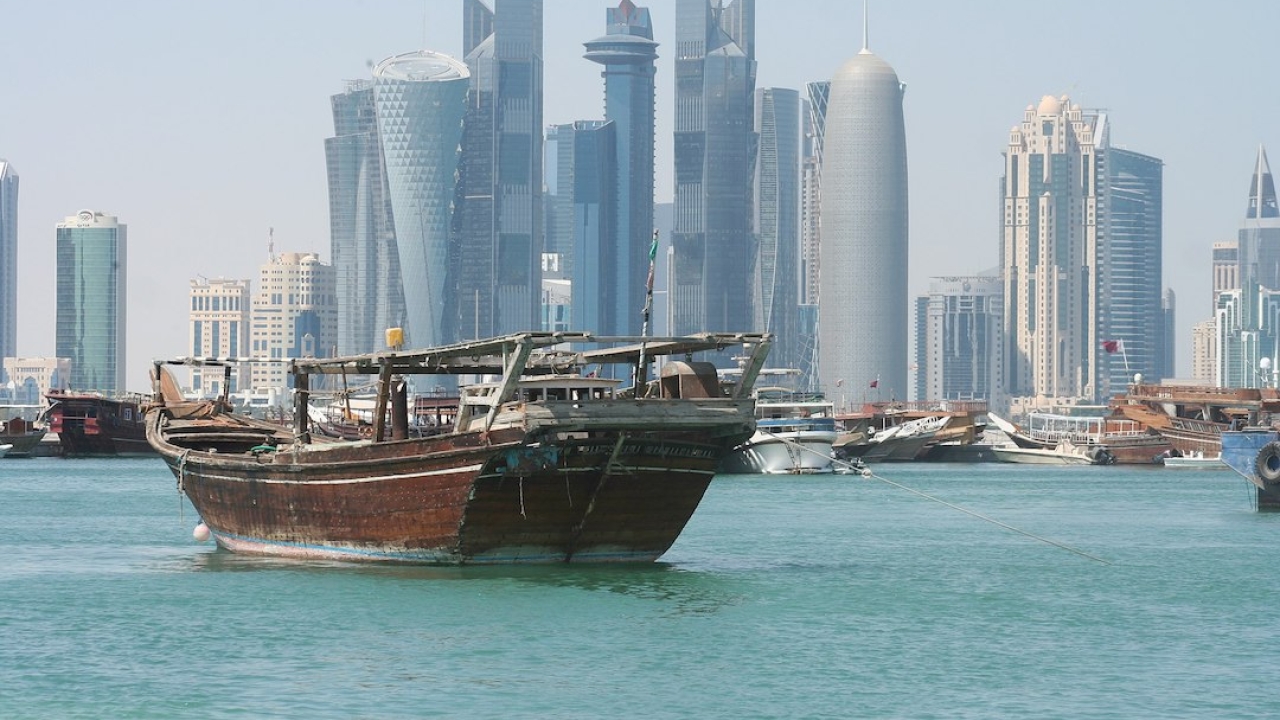Qatar’s new FIR set to fly
The first major change in decades to air traffic control arrangements in the Gulf is imminent as the creation of a new Qatar flight information region (FIR) nears its final stages.

Safely does it: Passengers departing from Doha will soon be in the charge of Qatar’s own air traffic controllers. Picture: Wikimedia Commons
Aircraft heading for destinations in the Arabian Gulf, or transiting that region have, for years, been guided by controllers at the Bahrain FIR.
The island kingdom’s FIR, which it inherited after independence from the United Kingdom in 1971, covers a large slice of the western side of the Gulf, from the UAE’s western extremity in the south to near Kuwait in the north.
One reason for the large area originally allocated to the Bahrain FIR was the relatively close proximity of Gulf Arab states to each other; if every nation had its own FIR, it was calculated that airline pilots would have to contact a new controller every 20 minutes or so.
The Bahrain FIR takes in the Qatari peninsula and the airspace around it.
In April 2020, however, the Qatar Civil Aviation Authority (QCAA) signed a contract with Independent Business Group Sweden (IBG). This included the development of the country’s air navigation system and increasing the efficiency of Qatar’s navigational devices, as well as training and developing the skills of controllers on how to deal with the new equipment.
Aviation infrastructure specialist, IBG, was also engaged to increase the capacity and throughput of Hamad International Airport and its predecessor, Doha International Airport, to allow for growth of Qatar Airways and to prepare the country for the increase in traffic anticipated for the 2022 FIFA World Cup.
That contract was signed during the diplomatic dispute between Qatar and its neighbours, Saudi Arabia, Bahrain, and the UAE, as well as Egypt.
The three-and-a-half-year dispute, which only ended in January this year, effectively closed the airspace of the neighbouring countries to Qatari aircraft. That meant that Qatar Airways’ flights had to operate in and out of Doha using a narrow corridor across the Gulf to and from Iranian airspace.
Once under Iranian air traffic control, Qatar Airways’ flights could turn on to the headings for their destinations. However, the closure of Saudi, Bahraini and Emirati airspace meant significant detours were required for many Qatar Airways flights, considerably increasing some flight times and costs.
For example, a Qatar Airways flight from Doha to Djibouti would normally depart the Qatari capital and head southwest across Saudi Arabia to the Horn of Africa, a journey taking around 2.5 hours. With Saudi airspace closed, however, the flight had to navigate out over the Arabian Gulf before turning south across Oman (which remained neutral in the dispute) and on to Djibouti, creating a journey some four hours long.
With the work by IBG under way, Qatar’s proposal that a Doha FIR (together with a Doha search-and rescue region – SRR) should be established was agreed in principle at the International Civil Aviation Organization (ICAO) session in July, according to the country’s ministry of transport and communications.
The proposal included Qatar’s intention to withdraw from the current arrangement, whereby Bahrain handled air traffic over its neighbour’s territory.
The ICAO, the United Nations agency that oversees global aviation affairs, noted that Bahrain had provided safe and efficient air navigation services in the region, but also acknowledged Qatar’s right to request the establishment of a Doha FIR/SRR over its sovereign territory and contiguous airspace.
The ICAO council invited Qatar and Bahrain, plus surrounding states, to get together and agree on appropriate technical arrangements to implement the Doha FIR. Those details were scheduled to be discussed over the late summer and autumn, with a further session to discuss final details due to take place at the ICAO council meeting in Oman as Arabian Aerospace was going to press.
The schedule calls for the new Doha FIR to go live in March 2022.
Stay up to date
Subscribe to the free Times Aerospace newsletter and receive the latest content every week. We'll never share your email address.


